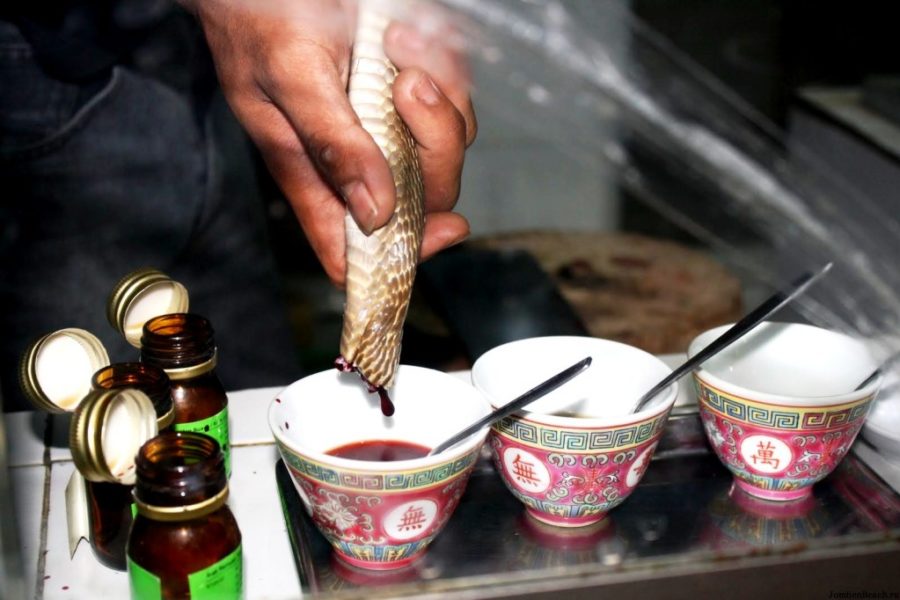So far we've explored plenty of mysteries in North America, Europe, and even Australia, but today we're heading to Asia to explore some of the most intriguing, bizarre, and creepy mysteries from Japan.
10. Who made the SOS signal?
In 1989, a strange event known as the Daisetsuzan National Park occurred.SOS Incident On July 24, two tourists from Tokyo went missing while exploring Mount Asahi. A rescue helicopter was sent out to find them, and managed to find them safe and sound after spotting a large SOS sign on the ground. All's well that ends well, right?
Well, here's where it gets weird - they didn't make the sign. It had been there for years, apparently from another climber who wasn't as lucky as them. Upon closer inspection of the area, a large hole had been dug next to the sign, containing a notebook, some tapes, two cameras, and a few other items, including a driver's license belonging to a man named Kenji. Iwamura He disappeared back in 1984 while walking in the neighborhood.
Closer to the SOS sign, investigators found human remains. Initial analysis showed that they belonged to a woman, although this may have been revised in later years. Even if all the remains and objects belonged to Iwamura, authorities are still unsure how he constructed the giant SOS sign without any tools and likely while injured. Perhaps there is more to discover in these woods.
9. Who killed Sakamoto Ryoma?

For many people in Japan, Sakamoto Ryoma is a national hero. Born in 1836, Sakamoto was a low-level samurai who opposed the ruling Tokugawa shogunate but eventually became a revolutionary who played a major role in the collapse of the shogunate and the establishment of the Japanese Empire during the political event known as the Meiji Restoration.
Sakamoto's place in Japanese history is deeply ingrained, but you can't have that kind of influence without making a few enemies, and he paid the price with his life. On December 10, 1867, he and a close associate named Nakaoka Shintarō? were attacked by assassins while staying at a hotel in Kyoto. Sakamoto was killed instantly, but his friend survived for two more days.
A month later, a civil war known as the Boshin War broke out, culminating in the victory of the Imperial Court and the rise of the Japanese Empire. However, Sakamoto never saw his dream come true. Although his killers were undoubtedly killers -shoguns , their identities and the identities of the people who incited them to do so remain enduring mysteries.
8. Who made the Yonaguni monument?
In the mid-1980s, divers exploring the waters off the coast of Yonaguni Island made an incredible discovery: an underwater rock formation over 100 meters long and 60 meters wide, strongly resembling a ziggurat, or step pyramid. Smaller nearby formations suggested that the divers had just stumbled upon sunken ancient city, similar to the legendary Atlantis. After further study, scientists came to the conclusion that Yonaguni Monument , as it has come to be known, is around 5,000 years old, and is all that remains of a mysterious lost civilization after a massive earthquake doomed their society. Some have even speculated that the monument could be a remnant of the mythical lost continent of Mu.
While it's certainly a tempting idea, not everyone is buying it. Many scientists believe that the Yonaguni Monument was created by nature, not man. Earthquakes, underwater whirlpools and marine life - all worked together to create this mysterious underwater structure.
Both sides stand firm in their positions and the issue is far from being resolved, so until then the Yonaguni Monument remains one of the most mysterious structures in Japan.
7. Who committed the 300 million yen case?

On December 10, 1968, four employees Nihon Shintaku Bank loaded nearly 300 million yen into an official car and drove to the Toshiba plant, where the money was to be used as a bonus for the workers. Shortly before arriving at their destination, they were stopped by a young policeman on a motorcycle. He told them that there had been an explosion at the home of their branch manager and that there might be another bomb under their car. The four got out of the car, and the policeman crawled underneath to check.
Soon fell from under the car body smoke and flames . A police officer screamed in panic that a bomb was about to explode, prompting four bank employees to run for their lives. At that point, the officer simply got into his car and drove away with 300 million yen. In fact, he was not a real police officer, but a rather daring criminal, and using a fake uniform, a flare gun, and a lot of imagination, he had just pulled off the greatest robbery in the country's history.
The robber was never identified and the money was never recovered, despite numerous clues, four witnesses and even a composite sketch of the perpetrator. It simply remains a fascinating and mysterious chapter in Japanese criminal history.
6. Who (or what) was Utsuro-bune?

Every country has at least one good UFO story, and Japan is no exception. The key difference is that Japan's most famous close encounter goes back centuries, to the early 1800s during the Edo period.
This is a story about utsuro-bune , which roughly translates to " hollow ship "One day, this strange vessel washed up on the shores of Hitachi. Several fishermen approached the ship, and out came a beautiful woman who spoke in an incomprehensible language and clutched a box to her chest. The captain of the fishing vessel was the only one who dared to approach her, and he looked inside her vessel and saw that there were strange inscriptions on its inner walls. A few minutes later, the woman returned to her vessel, sailed out to sea, and was never seen again, while the fishermen spread rumors about their eerie encounter everywhere.
So who was Utsuro-bune? Was she simply a visitor from another land, or someone who had been cast into the sea in exile? Was she an alien visitor, or some kind of sea creature, or was she simply a product of the fishermen's wild imaginations?
5. What happens in the dragon's triangle?
You've probably all heard of the Bermuda Triangle, a section of the North Atlantic Ocean that's home to a number of supposedly unexplained phenomena that have caused numerous ships and planes to disappear over the years. It's been a favorite topic for paranormal enthusiasts for decades, but Japan has its own little supernatural corner in the Pacific Ocean, south of Tokyo.
He is known as Snake Triangle or the Devil's Sea. Over the centuries, many Japanese fishermen have drowned in their watery graves here, but even today, it seems that the triangle still demands victims. Back in 1955, when New York Times reported the missing ship, they said the "devil's sea" was " mysterious cemetery ", responsible for the disappearance of nine ships in the previous five years alone.
Are all these disappearances legal, and if so, what caused them? One vessel is known for certain to have disappeared in the Serpent's Triangle: the research vessel " Kaio-Maru No. 5". It disappeared in September 1952 while exploring new islands formed by underwater volcanic eruptions. Perhaps one of these eruptions was the cause of its destruction. Or who knows? Maybe they were aliens...
4. Who committed the Satanic Verses murder?

When Salmon Rushdie published "The Satanic Verses" Back in 1988, he was met with much sarcasm and controversy, with Ayatollah Khomeini even calling for his death. Rushdie was placed under police protection and survived several attempts on his life, but not everyone was so lucky.
Hitoshi Igarashi was a Japanese scholar of Persian and Arabic literature. In 1990, he translated "The Satanic Verses" into Japanese and thus became a target. Igarashi was killed July 12, 1991: A janitor found him in his office at Tsukuba University with six stab wounds to the face, neck and arms.
No one has ever claimed responsibility for the attack, but it is unlikely that his murder was not related to his work. At the time, there was a 15-year-old in Japan statute of limitations for murder, so even if the killer is ever identified, he will get away with it, but for now he remains a mystery.
3. Who killed the Miyazawa family?

Another of Japan's most famous unsolved crimes occurred on the night of December 30, 2000, when the entire family Miyazawa - a father, mother and two young children - were killed during a home invasion in Tokyo's Setagaya district.
Their bodies were discovered the next morning by a family member. One of the children had been strangled and the other three had been stabbed. It later emerged that the killer had been in the house for several hours, perhaps even overnight. He left behind a mountain of evidence , including blood, fingerprints and personal belongings. And yet, despite one of the largest investigations in Japanese history, the killer is still at large.
2. Who was the monster with 21 faces?
In March 1984 Katsuhisa Ezaki , the president of the food company Ezaki Glico, was kidnapped at gunpoint from his home in Osaka. However, Ezaki managed to escape his captors and reach safety less than three days later. The kidnapping of such a high-ranking official had already shocked the nation, but it was about to get even more sinister.
The group responsible called themselves the "Monster with 21 Faces," inspired by the fictional villain. Their initial plan failed, so they changed course to extortion—pay them money or they would lac Glico candies with cyanide and drop them in supermarkets across the country. No one would know whether they were about to enjoy a sweet treat or poison. The company didn't pay up, and the criminals didn't follow through on their threats. Still, recalls and scared shoppers led to huge losses companies and the layoffs of 450 people.
But that wasn't the end, as the "monster" moved on to another candy company called Morinaga. This time, they actually left the tainted candies in stores from Tokyo to Hakata. They also attached a sticker that mentioned that the candies contained poison, but warned that the sticker would not be used next time.
Such a strange case deserved a shocking conclusion, and it was received in August 1985. The head of the investigation, Superintendent Shoji Yamamoto , publicly apologized for his team's failure to apprehend the criminals. He then went home, doused himself with kerosene, and set himself on fire. After his death, the extortionists sent another letter offering their condolences and declaring that they would end their reign of terror. And just like that... the Monster with 21 Faces was never heard from again.
1. Who poisoned the vending machines in Japan?

We end with another accidental poisoning that also happened in 1985, like the Monster with 21 Faces. While this one may not have had the same creepiness factor, it was far more deadly.
This time the criminal targeted vending machines , leaving small bottles inside the dispensers. People who used the vending machine got two drinks instead of one. They probably thought it was their lucky day, when in fact for many of them it was their last.
The bottles were usually laced with a herbicide called paraquat , so the spree was also known as the paraquat murders. At least ten people were killed and dozens of others fell ill until the poisonings stopped as suddenly as they had begun. No one was ever arrested.













Оставить Комментарий